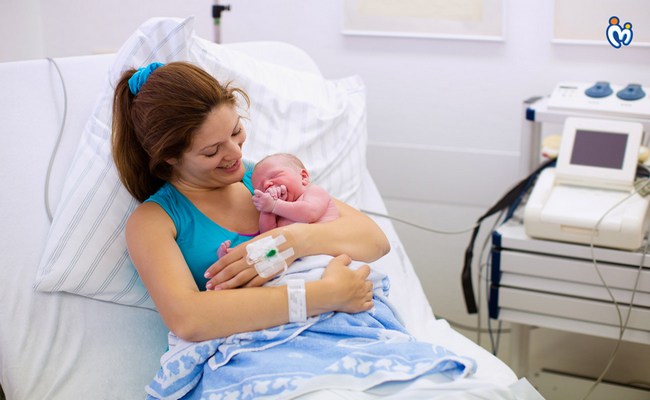Definition of Postnatal Care:
Postnatal care includes systemic examination of the mother and baby and appropriate advice given to the mother during postpartum period.

Definition of Postnatal Period:
The postnatal period is usually considered the interval extending from the birth of the baby until 6 weeks after. It is the 6 weeks interval between the birth of the newborn and the rectum of the reproductive organs to their normal non-pregnant state.
Aims or Objectives and Importance of Postnatal Care:
It includes the following:
- To detect and treat at the earliest any gynecological condition arising out of obstetric legacy.
- To note the progress of the baby including the immunization schedule for the infant.
- To promote and monitor the mother’s psychological, emotional and social well-being and provide appropriate support.
- To promote and monitor the mother’s and baby’s physical well-being.
- To help the mother establish a successful infant feeding regime.
- To faster the development of good maternal infant relationships and the acceptance of the new baby within the family.
- To enhance the mother’s confidence in her ability to fulfill her mothering role.
- To impart family planning guidance.
- To promote health education, including education for Planned Parenthood.
Assessment and Care to a Mother During Postnatal Period:
Redness, heat, pain, cracked, and fissured nipples, inverted nipples, and palpable mass, painful, bleeding, bruised, blistered, cracked nipples.
2. Assessment of Uterine Fundus:
Fundus is deviated from the midline, boggy consistency, remains above the umbilicus for after 24 hours.
3. Assessment of Bowel Function:
Assess abdomen for distention, LBM, bowel sounds, hemorrhoids.
Abnormal Findings (Bowel): Constipation, diarrhea, epigastric pain, hemorrhoids.
4. Assessment of Bladder Function:
Asses last void, rule out urinary retention.
Abnormal Findings (Bladder): Inability to void, frequency, urgency, dysuria.
5. Assessment of Lochia:
Note amount, color, consistency, odour, presence of clots.
Abnormal Findings (Lochia): Heavy, foul, odour, bright red bleeding.
6. Assessment of Legs:
Assess for edema (peripheral, sacral, dependent), varicose veins, risk factors of thrombophlebitis, Homan’s sign.
Abnormal Findings (Legs) Positive Homan’s sign, painful, reddened area, warmth on posterior aspect of calf.
7. Assessment of Emotions:
Assess for sleep deprivation, ability to rest, energy level, comfort level, anxiety level, appetite, bonding behaviors, support system.
8. Postpartum Hemorrhage:
Loss of more than 500 mL of blood after vaginal birth, loss of more than 100 mL of blood after cesarean birth, a 10% change in HCT between admission for labor and postpartum or the need for RBC transfusion.
9. Assessment of Attachment Behavior:
Comforting techniques by parents, speaking about the infant in terms of identification, holding the infant, body contact, talking to the infant, affection to the newborn.
10. Postpartum Depression:
An intense and pervasive sadness with severe and labile mood swings; it is more serious and persistent than the baby blues.
11. Postpartum Psychosis:
Syndrome characterized by depression, delusions, and thoughts by the mother of harming either the infant or herself.
Postnatal Complications or Danger Signs for Women During Postnatal Period:
Women may experience a wide range of postnatal problems, some more serious than others and each with its own symptoms. Some of the more common problems include:
- Postpartum infections, (including uterine, bladder, or kidney infections),
- Excessive bleeding after delivery,
- Pain in the perineal area (between the vagina and the rectum),
- Vaginal discharge,
- Breast problems, such as swollen breasts, infection and clogged ducts,
- Stretch marks,
- Hemorrhoids and constipation,
- Urinary or fecal (stool) incontinence,
- Hair loss,
- Postpartum depression,
- Discomfort during sex,
- Difficulty regaining pre-pregnancy shape.

Maria Khatun Mona is a Founder and Editor of Nursing Exercise Blog. She is a Nursing and Midwifery Expert. Currently she is working as a Registered Nurse at Evercare Hospital, Dhaka, Bangladesh. She has great passion in writing different articles on Nursing and Midwifery. Mail her at “maria.mona023@gmail.com”
